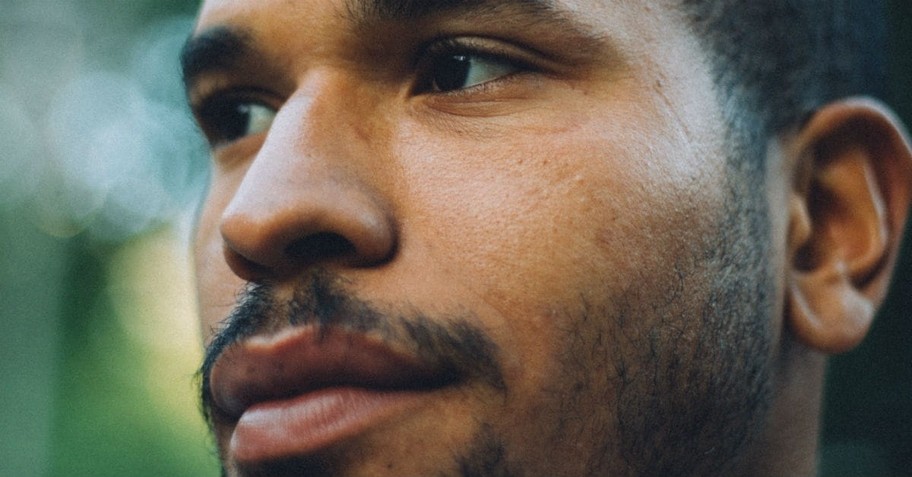10 Things You Should Know about the Image of God

The Imago Dei, Latin for “image of God,” is crucial for our understanding of who we are as the direct creation of God. Here are ten things to guide our thinking.
1. Embodied Imago Dei
We read in Genesis 1:26 of God’s determination to create man “in our image (tselem), after our likeness (demut).” Theologians typically have tried to identify one particular element or characteristic feature in humanity that embodies or constitutes the imago dei.
Photo Credit: Pexels/Vinicius Wiesehofer

2. Uniquely Made
If both humans and animals are created by God, yet the former bear his image and the latter do not, perhaps the image of God consists in some particular feature of a human not found in any animal. In other words, the image is something we possess, some property or properties uniquely characteristic of humans.
3. Capacity and Accountability
Some have distinguished between the “image” and “likeness” of God in man, the former consisting of our capacity for reason and choice, the latter of our moral and spiritual accountability to God. Irenaeus (135-205) is representative of this view (he argued that in the fall the likeness was lost, to be regained in redemption, but the image remained).
4. A Triune Nature
Thomas Aquinas focused on man’s reason, Calvin on the soul (i.e., the mind and heart), and Augustine on the mental capacities of memory, understanding, and will. Augustine argued that since man’s reason or mind is his preeminent or most important feature that we should likely find in it a reflection of God, hence his triadic model which he believed mirrored the triune nature of God.
Photo Credit: Unsplash/Austin Ban

5. Dominion and Stewardship
According to what we might call the functional view of the imago dei, the image and likeness of God consists not in something man is or has, nor in his relationship with either God or other humans, but in what man does. Primary emphasis has been placed on the exercise of dominion over creation. Note that in Genesis 1:26, immediately after God’s declaration that man would be made in his image, it is said, “and let them rule over the fish of the sea and over the birds of the air . . .” This emphasis on dominion and stewardship over creation is found in Genesis 1:28-30. See also this link between the image and dominion in Psalm 8:5-6 (“Yet you have made him a little lower than the heavenly beings and crowned him with glory and honor. You have given him dominion over the works of your hands; you have put all things under his feet”). But as Dennis Okholm asks: “Does the imago consist of dominion, or was dominion a result of having been made in the image of God?” (“Theological Anthropology in Christological and Soteriological Perspective,” 7).
Photo Credit: Unsplash/Tim Wright

6. Capacity for Relationship
Some have argued that the image consists primarily in our capacity for relationship and social interaction both with God and other humans. Karl Barth (1886-1968) pointed to Genesis 1:26-27 where God (described as plural, “We/Us/Our”) creates man as male and female (plural). Since there is plurality and thus relationship and interaction within the Godhead, so they who are the image of God are likewise fundamentally relational in nature. I agree with Bruce Ware, however, and wonder “whether the point of mentioning ‘male and female’ was to say that the image of God was constituted by their social relatedness, or might the point more simply be that both man and woman are created in God’s image.”
Photo Credit: Unsplash/Ryan Jacobson

7. Image Lost, Then Restored
Martin Luther (and to some degree, Calvin) emphasized man’s original righteousness as embodying the image of God. Thus, the fall significantly damaged and perverted the image, without destroying it entirely (see especially Genesis 9:6-7 and James 3:9 which indicate that whatever of the image was lost in the fall it in some sense still remains). The image, for Luther, was a special relation man had to God which Adam lost but Christ restores (see Eph. 4:24 and Col. 3:10).
8. Moving Toward Imago Dei
Then there is what might be called the “dynamic” view of the image of God. This is difficult to explain, but essentially entails the idea that the image is not to be found in the structure of human personality or in our functions or relationships, but rather is a goal or destiny to which redeemed humanity is moving. Daniel Migliore put it this way: “Being created in the image of God is not a state or condition but a movement with a goal: human beings are restless for a fulfillment of life not yet realized” (Faith Seeking Understanding, 128). Although all humans are even now in the image of God, that image is fully embodied by Jesus Christ according to whose image we are being shaped and conformed. Thus, the image is both a present reality and a dynamic and progressive telos (goal) toward which we are moving.
Photo Credit: Thinkstock

9. 3 Claims from 2 Clues
Dennis Okholm expands on the dynamic view by arguing that we have two clues in helping us identify the image of God in man: “(1) we have those references that describe the goal of our regeneration or redemption – viz., Eph. 4:24; Col. 3:10; 1 Cor. 15:49; and 2 Cor. 3:18; and (2) we have those references that point us to Christ who as the ‘Adam’ is also the very eikon of God – viz., Col. 1:15; Heb. 1:3; and 2 Cor. 4:4” (8). He thus concludes with three claims about the imago dei in man.
First, the restoration of the image involves “becoming like Christ” (see Rom. 8:29; Col. 1:15). To the degree that we correspond to or become like Jesus, the more perfect is the image reflected in us.
Photo Credit: Unsplash/Peter Sevcovic

"The goal of our salvation is the restoration of the image of God."
Second, the restoration of the image is a “continual process” (2 Cor. 3:18). “In other words,” says Okholm, “the goal of our salvation is not to be forgiven of our sins nor to escape hell. The goal of our salvation is the restoration of the image of God” (9). I must say that I don’t agree with this last point. The goal of our salvation is unbroken fellowship in God’s presence and the beholding of his beauty that brings consummate joy and satisfaction of soul.
Photo Credit: Unsplash/Eye for Ebony

"The 'restoration of the image is not an isolated project of the individual.'"
Third, the restoration of the image “takes place in community,” or more accurately “as community” (Eph. 3:17b-19; 4:12-13,15-16; Col. 3:10-11). The “restoration of the image is not an isolated project of the individual” (9) but occurs only as we grow up together in Christ. (On the element of “community” as essential to the restoration of the image, see especially Stanley Grenz, Theology for the Community of God [Grand Rapids: Eerdmans, 1994], 151-80.)
Photo Credit: Thinkstock

10. A Holistic View
It would appear that each of the above views is true in what they affirm but incomplete because of what they deny. Perhaps a more holistic view is in order that embodies all of these elements. Anthony Hoekema (Created in God’s Image [Eerdmans, 1986]) states:
“Must we think of the image of God in man as involving only what man is and not what he does, or only what he does and not what he is, or both what he is and what he does? Is ‘image of God’ only a description of the way in which the human being functions, or is it also a description of the kind of being he or she is?” (69)
Photo Credit: Unsplash/Danijela Froki

"...those who relate to and represent God on earth."
Hoekema goes on to emphasize that our structural capacities (reason, will, conscience, etc.) provide the necessary conditions for us to function and to fulfill our responsibilities as those who relate to and represent God on earth. In an unpublished paper, Bruce Ware builds on this suggestion and concludes that:
“the structural serves the purpose of the functional being carried out in relationship. One might think of this proposal, then, as advocating a ‘functional holism’ view of the image of God. That is, while all three aspects are involved, priority is given to the God-ordained functioning of human beings in carrying out the purposes he has for them to do. Perhaps our summary statement of what it means to be made in God’s image could employ this language.”
Photo Credit: Unsplash/Brooke Cagle

"We are images of God in order to image God and his purposes."
Ware then draws this conclusion, and with it, I close:
“The image of God in man as functional holism means that God made human beings, both male and female, to be created and finite representations (images of God) of God’s own nature, that in relationship with him and each other, they might be his representatives (imaging God) in carrying out the responsibilities he has given to them. In this sense, we are images of God in order to image God and his purposes in the ordering of our lives and carrying out of our God-given responsibilities.”
Sam Storms is an Amillennial, Calvinistic, charismatic, credo-baptistic, complementarian, Christian Hedonist who loves his wife of 44 years, his two daughters, his four grandchildren, books, baseball, movies, and all things Oklahoma University. In 2008 Sam became Lead Pastor for Preaching and Vision at Bridgeway Church in Oklahoma City, Oklahoma. Sam is on the Board of Directors of both Desiring God and Bethlehem College & Seminary, and also serves as a member of the Council of The Gospel Coalition. Sam is President-Elect of the Evangelical Theological Society.
This article was originally published on SamStorms.com. Reprinted with permission. You can see the original here.
Photo Credit: Unsplash/Jack Sharp
Originally published March 21, 2022.








